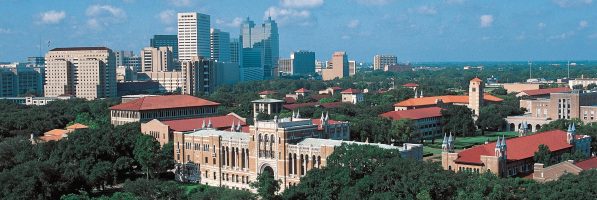Where Did Tex-Mex Cuisine Come From, Anyway? Stanford GSB Investigates

Cultural crossover consumerism often as hard to define as it is to track down. From the origins of craft beer, to new styles of cuisine, tracing the origins of these now normalized products can be a never-ending quest.
The Stanford Graduate School of Business recently dove into that calls the authenticity of the Tex-Mex category into question and explores how the mysterious cuisine came to be.
In a new study coauthored by Lane Professor of Organizations Glenn R. Carroll and former Chicago magazine dining critic Dennis R. Wheaton, the duo analyzed how so-called “Tex-Mex” food emerged. They point to an influential 1972 cookbook entitled “The Cuisines of Mexico” by Diane Kennedy.
According to the authors, Kennedy “drew a bright line between the types of Mexican food served on either side of the U.S.-Mexico border.” Her intention was to “protect the purity of the Mexican category [and] advance the idea that Americanized Mexican food was inferior and inauthentic compared to the cuisines of Mexico.”
Carroll and Wheaton noted some major sociological factors that influenced the emergence of Tex-Mex, namely the cross-border race and class tensions between “Mexicans and poor Mexican-American immigrants, as well as between white Americans and Mexican-Americans.”
Despite Kennedy’s assessment of Tex-Mex as a derogatory and denigrating label, the cuisine—loosely defined by corn chips, crispy tacos, burritos, chili con carne, nachos, fajitas, and combination plates slathered in yellow cheese—flourished in restaurants that catered primarily to non-Mexicans e.g. Taco Bell, Chipotle, Chi-Chi’s, and El Torito.
The study incorporates a quote from Texas food writer Robb Walsh, whose defends the legacy of Tex-Mex, offering a more optimistic take on the mass-produced foodstuff.
“We can all thank Diana Kennedy for inadvertently granting Tex-Mex its rightful place in food history,” Walsh says.
“By convincing us that Tex-Mex wasn’t really Mexican food, she forced us to realize that it was something far more interesting: America’s oldest regional cuisine.”
You can read more about Stanford’s look into the history of Tex-Mex here.
Rice Professor Earns Lifetime Achievement Award

An accounting professor at the Rice University – Jones Graduate School of Business was recently awarded the 2017 Lifetime Service Award from the American Accounting Association (AAA).
“Business in Capitals” Immersion Takes MBA@American Online Students to Brussels

Last month, a group of Kogod School of Business students took part in an academic and a cultural immersion to Brussels, Belgium. The study experience was the first official MBA@American international trip, bringing together 60 MBA candidates from across the country to explore the European business landscape. Continue reading…
SDSU Sports MBA Team Wins Case Competition

For the first time, the SDSU Fowler College of Business Sports MBA program won its own case competition. The 8th annual SDSU International Sports MBA Case Competition has invited teams from MBA programs around the world to compete for almost a decade. This past year, teams came from MBA programs at schools such as Hong Kong University of Science & Technology, the University of Oxford, the University of Michigan, UCLA and USC. But this time, the winning team of four graduate students came from SDSU. Continue reading…
New Research from Terry College Reveals Impact of Hispanic Market in U.S.

A new report from the University of Georgia – Terry College of Business reveals that Hispanic market buying power in the United States exceeded the gross domestic product of Mexico last year.
Lake Forest MBAs Visit Mexico City in Global Focus Program

As part of the Lake Forest Graduate School of Management’s (LFGSM) Global Focus Program, 15 MBAs recently spent a week studying the in’s and out’s of the Mexican economy in beautiful Mexico City. The group was led by Juan Rocha, LFGSM Business Leader Faculty member, Founding Partner of Dynamic Solutions, and Mexico City native. Continue reading…
